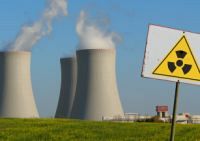

The output of British power stations fell this year to levels last seen almost a quarter of a century ago, while renewable energy achieved a lion's share of the UK electricity supply.
The reduced need for power came despite there being 8 million more people living in the UK. Analysts said the figures were a sign of increasingly efficient use of energy and the country's changing economy.
The UK website Carbon Brief, which analysed Government and industry data, found that 335 terawatt-hours were generated by power plants last year, down by around 1% on the year before. Since 2005 the level has fallen by 16%.
Simon Evans, policy editor at Carbon Brief stated "it could be a combination of more efficient appliances, energy-saving lightbulbs and, more recently, LEDs. Then there's supermarkets installing better fridges, industry using more efficient pumps. Across all of those businesses, efficiency will have been going up. And of course there's the changing nature of industry in the UK".
He added that the financial crisis may also have played a role in making homes and businesses more careful with their energy use.
While generation fell almost every year between 2008 and 2014, it remained stable between 2015 and 2017 but has began declining again in 2018.
Previous research by the Committee on Climate Change found that more energy efficient appliances helped save the average household £290 a year between 2008 and 2017.
Evans commented that continuing to use energy more efficiently would help the UK reach its binding climates goals, adding that "using less as an end in itself isn't the point. But it is the case that meeting carbon targets is made easier if we use energy efficiently".
Data from the National Grid showed that 2018 was the greenest year to date for electricity generation, as more power is sourced from renewable sources and less from coal. The carbon intensity from electricity generation was down 6.8% last year and has more than halved since 2013.
The analysis by Carbon Brief found that renewable sources including biomass, hydro, solar and wind power supplied a record 33% of electricity this year, up from 29% last year. Renewables were just 6.7% of the mix in 2009.
Green energy was boosted primarily by new windfarms connecting to the grid, as well as new biomass plants, which included the conversion of a coal unit at Drax power station in North Yorkshire and the conversion of a former coal plant at Lynemouth, Northumberland.
Meanwhile, the coal-driven output was down 25%, nuclear generation down 8% and gas despite being the top source of electricity supplies, fell by 4%.